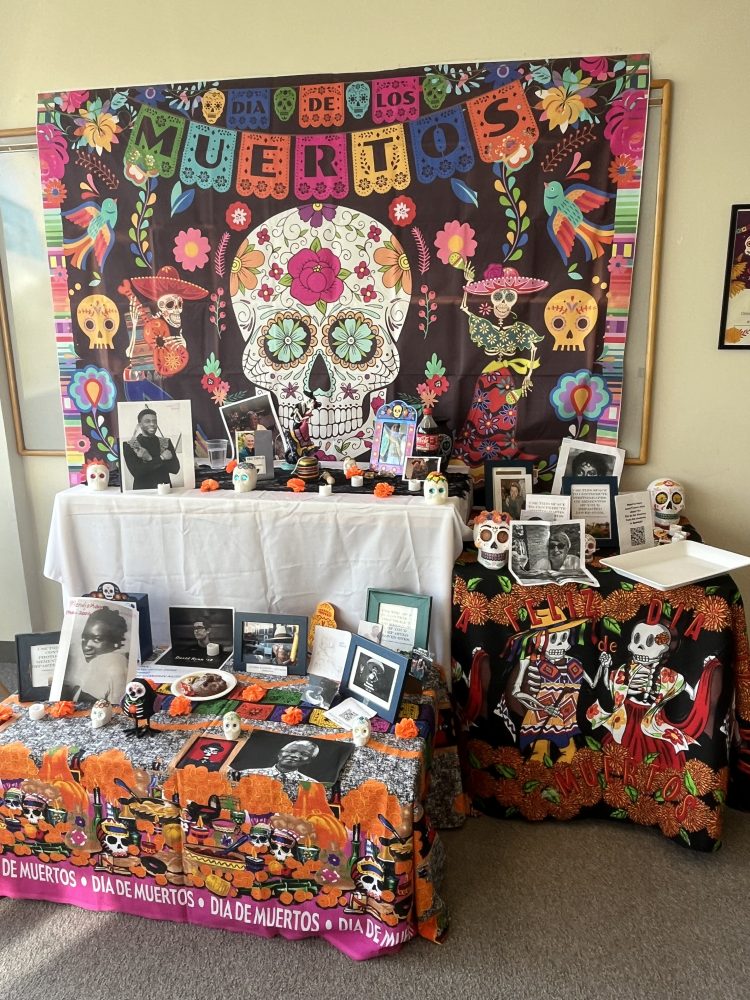
The Spanish Program of Global Languages invites the MIT community to visit their annual Día de los Muertos altar from October 27th to October 30th in room 14E-304. All are also invited to a special gathering on October 30th from 5:00 to 6:00 p.m. to reflect, learn, and celebrate this joyful tradition together. Refreshments and pan de muerto—a traditional Mexican pastry—will be offered.
Día de los Muertos is a joyful tradition that honors the lives of our deceased loved ones through memory, food, color, and community. Rooted in Indigenous practices in what is now Mexico and parts of Central America, and shaped by centuries of colonial rule, this annual commemoration on November 1st and 2nd invites us to remember those who are no longer with us and celebrate them rather than mourn in silence. Traditionally, families and friends symbolically welcome back their loved ones by cooking their favorite meals, cleaning or decorating their graves, and sometimes even holding overnight vigils to honor and remember those who have passed away.
The most well-known Día de los Muertos tradition is the colorful altar and its ofrendas—offerings— for which communities come together to celebrate life, and commemorate the dead. These ofrendas traditionally include photographs of the departed, along with their favorite foods or items that tell each person’s story, surrounded by flores de cempasúchil —marigolds— and papel picado, colorful cut paper. These items are said to attract the spirits to the altar through the use of color and scent. Everyone in our community is welcome to add to our altar a photo or brief note honoring someone, if you wish.
The holiday combines Mesoamerican traditions and beliefs with Catholic elements that became part of the celebration over time. The celebration is centuries old but only began to be celebrated throughout Mexico as a national holiday in the 1950s, when the Mexican government was leading an effort to build a nationalistic identity rooted in a romanticized past. During the past twenty years, the celebration’s popularity has boomed both in Mexico and abroad.
Join the Global Languages community on October 30 to learn more about this celebration or visit the altar during the exhibition period!

